Review for May’s Mysteries: The Secret of Dragonville
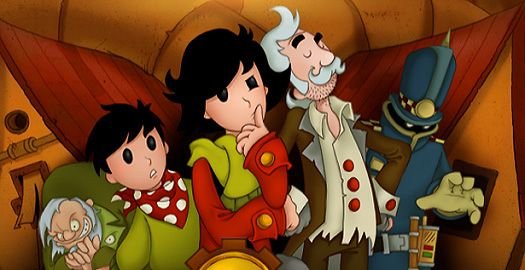
Balloonville residents May Stery and her little brother Tery choose an idyllic, sunny day for a joyride in their contraption of choice – a hot air balloon. But an unexpected storm accosts them midway and flings them across the ocean, crashing them at the gates of the much-feared Dragonville. When May recovers she finds her brother gone, and it soon becomes evident that Tery's fate is intrinsically linked to the ominous town's. As she sets out after him in May's Mysteries: The Secret of Dragonville, the titular protagonist must summon every bit of her intelligence and presence of mind to solve the assorted problems posed by its citizens and stave off assassination attempts by its despotic ruler if she's to save her brother and the town from certain doom.
Originally released for the Nintendo DS and later ported to PC, May's Mysteries is a Professor Layton-styled puzzler that delivers a whopping 270 standalone challenges wrapped in bright, cutesy art. It can easily engage you for up to 20 hours should you choose to solve all of them – though only about one-third of the puzzles are encountered in-game, the rest unlocked along the way as playable bonuses. On the downside, the cheery graphics and playful music cannot invoke the dark, menacing ambience the mystery warrants, and there is no 'adventuring' per se, except to click exit arrows to move from screen to screen. The game appears childlike, but the puzzles are often brutal and frustrating, and without any inventory-related quests between them, it may be mentally exhausting for players who don't absolutely relish stomping through one brainteaser after another. For puzzle aficionados, though, this is like Christmas come early, albeit with lots of repeated gifts.
The game offers the option of casual play (easier puzzles) versus normal, and starts with a brief tutorial on its standard features: quests are listed in a panel to the left that also houses a map showing May's current location, her inventory, the link to bonus puzzles, and sundry statistics like hint points and score. But quests are rare and few; similarly, the eight inventory slots are never filled to the brim. May receives quest items upon solving certain puzzles, but to use these she simply has to talk to the characters that request them. There is no interaction with inventory or any part of the screen while 'exploring' except for characters and exit arrows. The slideshow-style screens have one to three exits each, which must first be 'revealed' by clicking a button – a nuisance that adds over a hundred pointless clicks and disrupts the flow of movement when you're simply passing through. Some areas become available only after solving related quests.
The 90-odd in-game puzzles and minigames cover a wide range, including but not limited to: shape arrangers, sliders, logic questions, matchstick-moving and line-drawing patterns, strategic placement of objects, Sudoku-style number, colour and object grids, pouring games, hidden object screens, math equations, and Minesweeper-inspired grids where locations of active squares must be deduced from numeric or visual clues. There are also a bunch of sound-based rhythm tasks, where beats have to be replicated using mouse clicks and holds. Each puzzle type is repeated numerous times and frequently needs pen and paper. The puzzles themselves are displayed in inset windows, and must either be solved or skipped to proceed with the game and unlock the bonus puzzles (which are further variations of those you've already encountered). While theoretically optional, solving bonus puzzles earns hint points, the total depending on how well you do. Each puzzle has two hints that cost a point apiece, and skipping one costs fifteen points – which can pinch when you consider the total number to be solved.
Difficulty varies from very easy to mindboggling, and the ease with which you solve a puzzle depends on your familiarity and/or expertise with the type. Not all challenges stump you fairly: the hidden object screens, though well-illustrated, often require you to find very small, intricately concealed objects in darkish environments, while some puzzles warrant real-world knowledge of mathematical and geometric formulae, plus random data like card names of tarot decks. Another impediment to the more complicated puzzles is the ambiguous and/or insufficient instructions, partly due to awkward sentence construction, partly due to excessive brevity. Wrong answers get no feedback from May – she simply makes a long face – but more annoyingly, the puzzles are reset when you submit a wrong answer, so when you retry you have to start from scratch even if you only got one block of an eight-by-eight grid incorrect. The tougher tunes of the rhythm games are difficult to time exactly using the inefficient mouse click/hold mechanism. Overall, the game scores major points for the sheer quantity and variety of puzzles as well as their cute graphics, but with so many available they soon start to repeat, and many are for puzzle fanatics alone and may dishearten regular players if they are forced to skip too many.
Along with all the puzzles to solve, Dragonville has big problems of its own: its mayor has been deposed by an evil man named Uter and his dreaded Midnight Army, while all its children – and some adults as well – have gone missing since then. May's quest extends beyond town into the Underworld (complete with a lava lake and the River Styx with its customary glum boatman), then to a 'crypto-zoo' populated with strangely-mutated, amnesiac animals, and finally to an island with poker-playing pirates and a bone-in-nose native chanting 'haka maka waka'. The expansive supporting cast – almost every screen has a new character – trades information or the (very) occasional inventory item with May in exchange for her solving their problems. There is large assortment of characters, including a comely librarian, a fat spider-woman who has banished her garlic-loving husband into a dungeon, a headless warden, a mean circus trainer and a fortuneteller, but the momentary exchanges with each before May is shoved into a puzzle restricts them to mere caricatures quickly passed by en-route to somewhere more important. There is just one relevant persistent character, the old and apparently borderline-senile ex-mayor, who appears at opportune moments to propel the story forward.
Fortunately, button-eyed, iron-willed May is an engaging and competent lead. Determined to save her brother come what may, she is also empathetic towards others, and a committed champion for the good and the right. She takes no nonsense from the often-antagonistic and blackmail-friendly citizens of Dragonville, but at the same time, she is diplomatic enough to calm frazzled nerves and tolerate the self-serving comments of the ex-mayor. Her best quality, though – and this is hammered in throughout the game, starting from the first cutscene – is her intense interest in all things logical and mathematical. She thrives on cerebral challenges, and thus, for her, the expedition through puzzle-infested Dragonville would have been a joyous cakewalk if not for the niggling fact of her missing brother.
The mystery of Dragonville is, in fact, quite interesting and multilayered, but most of it is blurted out in the final few scenes as exposition, which leaves most of the game devoid of any real story or tension. May's adventure is a peculiar paradox of a relentless procession of scenes, characters and puzzles in which nothing noteworthy happens for lengthy stretches of time. Many story loops are opened: each character has a backstory, but even the few that last beyond the current screen are dragged only for a while before being summarily abandoned with one sentence dismissals, until you stop caring about anything except finding Tery. In a halfhearted attempt to compensate, some obvious red flags are scattered about, but all these do is take the sting out of the nasty twist at the end, reducing it to an 'er, why?' rather than a 'whoa, what?!'.
Visually, May's Mysteries uses simple but excellent art to display a vibrant world of bold, artsy architecture and detailed, cartoonish characters. Despite the all-pervading sense of gloom, graffiti-festooned walls and dilapidated buildings, Dragonville is done up in bright colours and has a warm feel. The supporting cast all have distinct appearances, expressions and personalities, and it's easy to determine the nature of the each – including the mutant animals of the crypto-zoo – simply by looking at them. Dragonville contains the bulk of the locations, followed by the hot Underworld, the rainforest-backed crypto-zoo, and the tropical island – though in the last area, May spends most of her time in a maze being bombarded by poisonous arrows and complex puzzles.
May is only seen during cutscenes or conversations, but there is subtle background animation like swinging lanterns and bubbling lava, while the secondary characters have a few realistic but repetitive movements. The story advances via sleekly-animated, adequately-voiced cinematics that are high on drama and motion, though these windowed cutscenes are inexplicably blurry. Conversations appear in partly-animated illustrated windows and have no spoken dialogue, and can either be clicked through or skipped altogether. Dialogues and instructions are simple, to-the-point and generally free of typos, but worded just a little awkwardly, which sometimes makes it difficult to fully grasp the intended meaning. The piano-based music starts off as playful, but soon chafes due to repetitiveness and can disturb concentration during puzzle-solving. As such, since there are no verbal conversations except in cutscenes, the game can be played with low or even no sound.
Overall, May's Mysteries: The Secret of Dragonville is a fully-loaded puzzler with some notable highs and lows. It is attractive and demanding, and delivers serious value for money... for players who love certain types of puzzles. However, its lack of organic quests and near-total absence of interactivity with the game world basically reduces it to a sequence of short chats with inconsequential characters with the sole intention of triggering the next standalone puzzle. The vast number and complexity of the puzzles greatly enhance the length and difficulty of the game, but many of them are repeats that disrupt and stretch out the potentially-interesting but eventually-flimsy storyline to the point of irrelevance. The visually attractive screens and characters are a joy to discover, but the cute-factor – further emphasized by the chirpy music – removes all sense of peril from the mystery. It's far from the most cohesive of adventures, but if you're yearning for a couple of hundred killer puzzles, you'll find more than you bargained for in Dragonville.
Our Verdict:
May’s Mysteries is a substantial puzzler that is sure to satisfy fans of logical and mathematical brainteasers, but offers little of interest for those seeking more.
You don't want to miss these articles
Adventure Gamers Community
Community reviews for more Adventure Games (randomly selected)
Review of Gabriel Knight 3: Blood of the Sacred, Blood of the Damned
Rating by Intense Degree (May 22, 2012)
Review of Gabriel Knight 3: Blood of the Sacred, Blood of the Damned
Rating by Intense Degree (May 22, 2012)


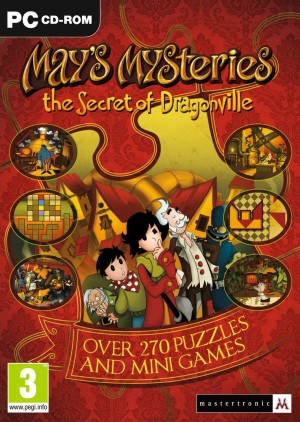







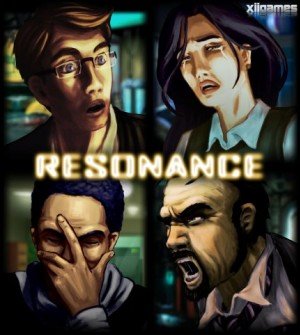
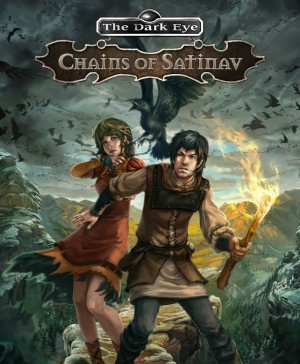
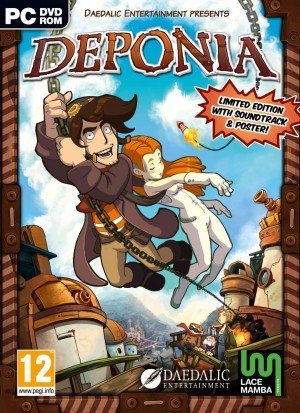






__small.jpg)







